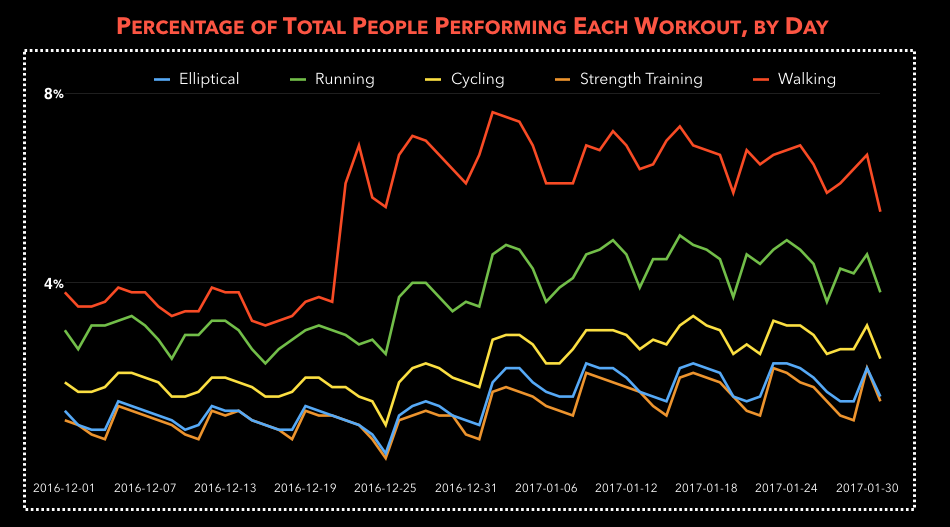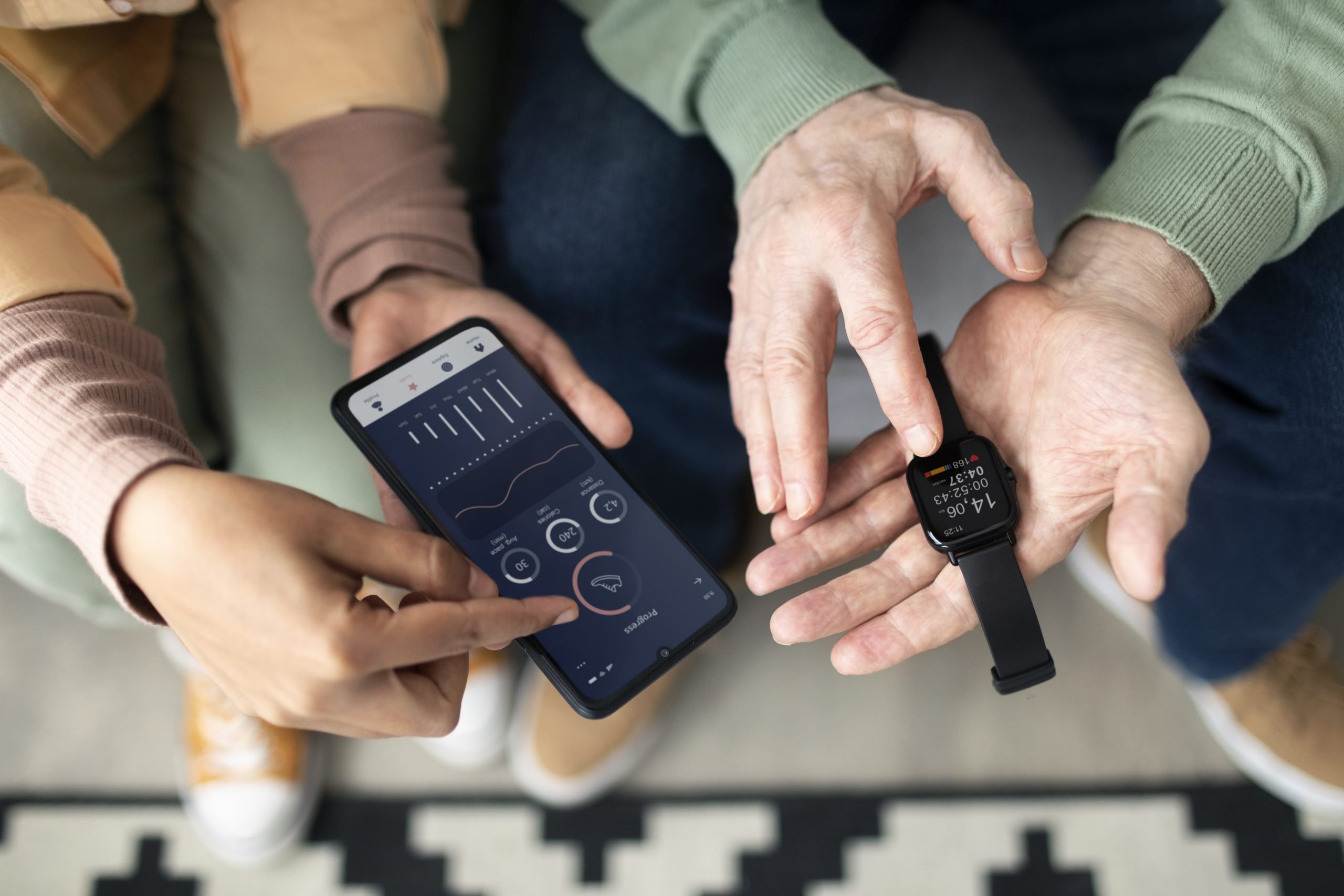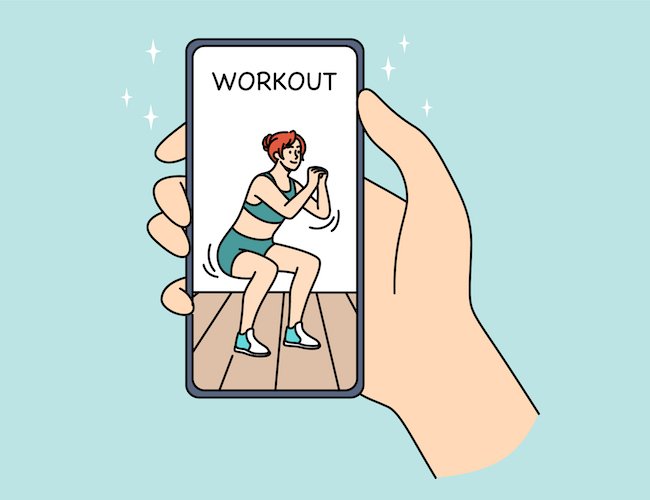
As mid-February approaches, the magic of New Year’s Resolutions is starting to wear off; the excitement surrounding exercising and eating healthy might start taking the backseat (yet again). By this time, it is quite likely that only 59% of your employees are still hanging on to what they had promised just over a month ago. If you initiated a wellness challenge in the office to celebrate “New Year, New You,” you might start losing people.
But it doesn’t have to be that way.
An encouraging article from Business Insider presented preliminary data from Cardiogram, an Apple Watch heart rate monitoring app. Of the 66,317 app users analyzed, 52% showed an increase in exercising in January, possibly due to their resolutions. While only 68% of people will stick to their resolution more than two weeks, the percentage of Cardiogram users sticking with their workout frequency has been quite consistent.

There are many reasons why Apple Watch (and other fitness devices) users are more likely to exercise consistently. First, devices and apps provide positive feedback on achievement and workout streaks, providing encouragement and keeping people motivated. The other upside of sustained motivation is that the longer people stick with a behavior, the more likely it becomes a habit.
Despite the urban myth that says it only takes 21 days for a habit to stick, science shows that it actually takes two to eight months to really build sustainable behavior. The longer people feel motivated, the closer they get to that tipping point from “just trying to incorporate it in” to “that’s just a part of my day.”
Secondly, smart devices like Apple Watch have many features that are outside the realm of wellness. Users can check messages and emails, receive calls, and even make purchases with it. They are constantly interacting with the device for both work and entertainment, and the feedback on health is just one welcomed bonus. Apple Watch is not relying only on people’s fitness motivation to keep its place on users’ wrists. This helps reduces device abandonment and allows the tracker to continue doing its job in the background.
This theme of sustainable behavior change assisted by technology is not new and has been highlighted many times on this blog. In addition to fitness goals, people are utilizing technology to achieve their nutrition, financial, and professional goals as well. Individuals find following through and achieving their goals becomes much easier when supported by a mobile application.
However, that is not to say that companies should force it on employees. Allowing people to bring their own technology will eliminate the learning curve associated with adopting a new application/device, decreasing their chance of abandoning it.













